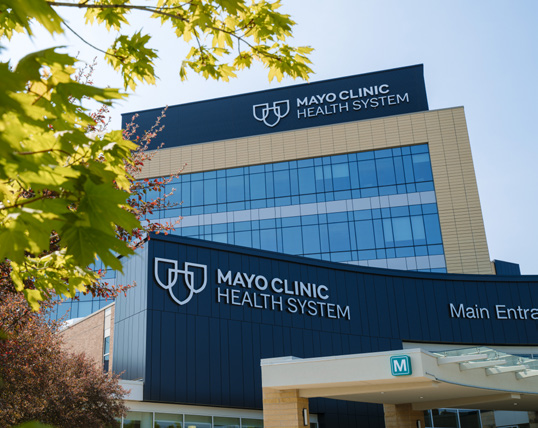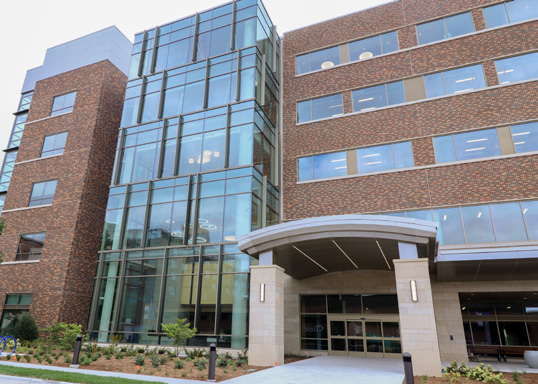See how Mayo Clinic is transforming healthcare spaces for the future of care
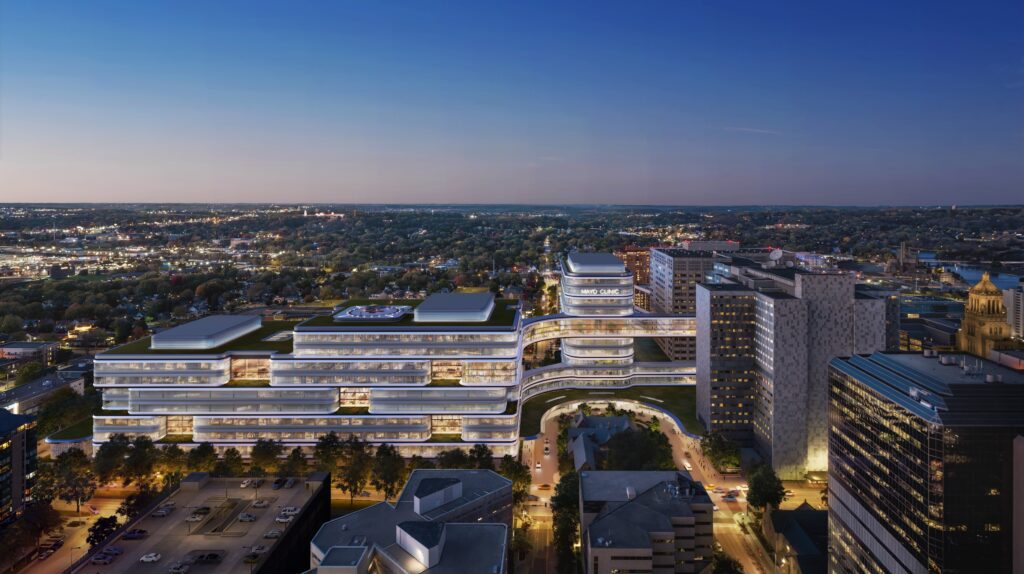
BOLD. FORWARD. UNBOUND.
Transforming healthcare spaces for the future of care
Mayo Clinic is leading patient-centered healthcare transformation through its Bold. Forward. strategy.
Launched five years ago, the strategy has three goals: Discover more cures for patients, connect people and data to create new, scalable knowledge, and transform the healthcare system from a linear pipeline to a scalable, highly collaborative platform model.
Bold. Forward. Unbound. is Mayo’s plan for reimagining its own infrastructure by seamlessly blending inpatient, outpatient and virtual care to deliver the next level of Category-of-One healthcare. Efforts are focused on creating innovative, digitally integrated and patient-centered spaces that are optimized for healing, cultivating measurably better experiences and outcomes for patients and staff.
This article explores how Bold. Forward. Unbound. is revolutionizing Mayo Clinic’s campuses and setting a new standard for healthcare everywhere.
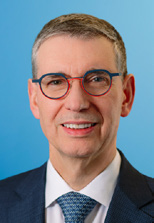
“ We must completely reimagine our approach to medicine, both digitally and physically.”
— Gianrico Farrugia, M.D., president and CEO of Mayo Clinic
Healthcare has seen remarkable advancements in recent years, but Mayo Clinic President and CEO Gianrico Farrugia, M.D. (I ’91, GI ’94), says there’s much more to do.
“The gap between the best and worst in healthcare is widening,” Dr. Farrugia notes. “To bridge this divide, we must completely reimagine our approach to medicine, both digitally and physically.”
Mayo Clinic has responded by developing transformational digital and physical solutions to close the gap.
For example, Mayo Clinic Platform is a digital ecosystem that uses de-identified patient data and new technologies to scale and share knowledge that enhances healthcare. This innovative solution is ushering in a new era of possibilities at the intersection of healthcare digitization and artificial intelligence (AI), enabling better care and outcomes for patients across all care settings. (See “Digital advancements with human connection” below for more information about Mayo Clinic Platform.)
Dr. Farrugia emphasizes that this groundbreaking platform is just one part of a bigger picture. “While digital advancements are crucial, we can’t overlook the importance of physical infrastructure in delivering superior care. This calls for urgent, innovative thinking about global healthcare facilities.”
Supporting the need for physical transformation, Bold. Forward. Unbound. is Mayo Clinic’s strategy to revolutionize healthcare spaces, optimized by flexible design and advanced digital capabilities.
“This vision is about creating healthcare environments that adapt, heal and inspire — setting a new standard for patient care and medical innovation in the years to come,” says Dr. Farrugia.
New construction is already underway across all of Mayo Clinic. Last fall, a further $5 billion plan to transform Mayo Clinic in Rochester was unveiled, with initial site work beginning this year. It will build and revitalize physical spaces to optimize exceptional patient care, conduct research and train future healthcare leaders.
The following is a summary of Bold. Forward. Unbound. projects across the Mayo Clinic enterprise.
BOLD. FORWARD. UNBOUND. IN ROCHESTER: SEAMLESS, PATIENT-CENTERED DESIGN
Bold. Forward. Unbound. in Rochester represents Mayo Clinic’s most ambitious vision for healthcare infra- structure. With five new structures comprising 2.4 million square feet of space and parking, the project is designed to blend hospital, clinic and digital care to meet patients’ needs, wherever they are.
“The new healthcare spaces in Rochester will embody a fundamental shift toward flexibility and patient-centered design,” says Amy Williams, M.D. (I ’87, NEPH ’90), executive dean of Practice.
In a typical hospital building, certain floors and spaces are permanently designed for surgery, hospital beds or imaging. The new spaces in Rochester, however, will feature a universal, flexible grid.
“This flexibility will allow spaces to be modified for future needs — for example, an operating room can adapt to become an ICU or imaging suite,” says Dr. Williams.
As part of this flexible model, dynamic, digitally enabled “neighborhoods” will centralize care teams and services around the patient while creating a warm, welcoming home for them while they’re at Mayo Clinic. They will improve synergies among adjacent practices in ways that better support Mayo Clinic’s multidisciplinary collaborative model of care — fostering team-based collaboration, staff well-being, continuous innovation, and integration of Practice, Research and Education. These spaces will also use natural materials, sunlight, winter gardens and interconnected public areas to create a calming atmosphere.
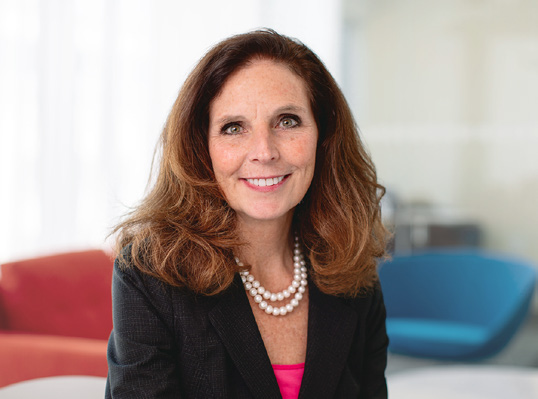
“ The new healthcare spaces in Rochester will embody a fundamental shift toward flexibility and patient-centered design.”
– Amy Williams, M.D., executive dean of Practice
By bringing patients and staff together in new ways, Bold. Forward. Unbound. will advance teamwork, transform the patient experience, create more cures and improve outcomes.
Bold. Forward. Unbound. in Rochester also will employ digital technologies to create personalized, data-driven patient experiences that incorporate AI, automation, predictive analytics and robotics to provide next-generation care. The building itself will serve as an additional member of the care team, as digitally enabled spaces with ambient intelligence gather and curate data, generate new insights, and provide the latest knowledge to care teams in real time so that they can spend more time with their patients.
“We’re seeking to connect patients to Mayo Clinic in new ways while enhancing convenience and satisfaction for both patients and staff,” says Craig Daniels, M.D. (I ’01, CI ’03, THDC ’04), physician leader of Bold. Forward. Unbound. in Rochester.
Notably, data provided by patients through apps or devices will customize patient and visitor transportation options and provide recommendations for activities between appointments. AI will automate routine staff tasks like documentation and scheduling. Predictive analytics, drones and robotics will ensure care areas are stocked with supplies for upcoming appointments, allowing staff to focus on complex, fulfilling work. AI-powered tools will also create a real-time, self-learning, proactive care environment that anticipates patient needs.
“ We’re seeking to connect patients to Mayo Clinic in new ways while enhancing convenience and satisfaction for both patients and staff.”
– Craig Daniels, M.D., physician leader of Bold. Forward. Unbound. in Rochester
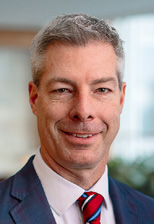
BOLD. FORWARD. UNBOUND. IN ARIZONA: ENHANCING SYNERGIES AMONG PRACTICE, RESEARCH AND EDUCATION
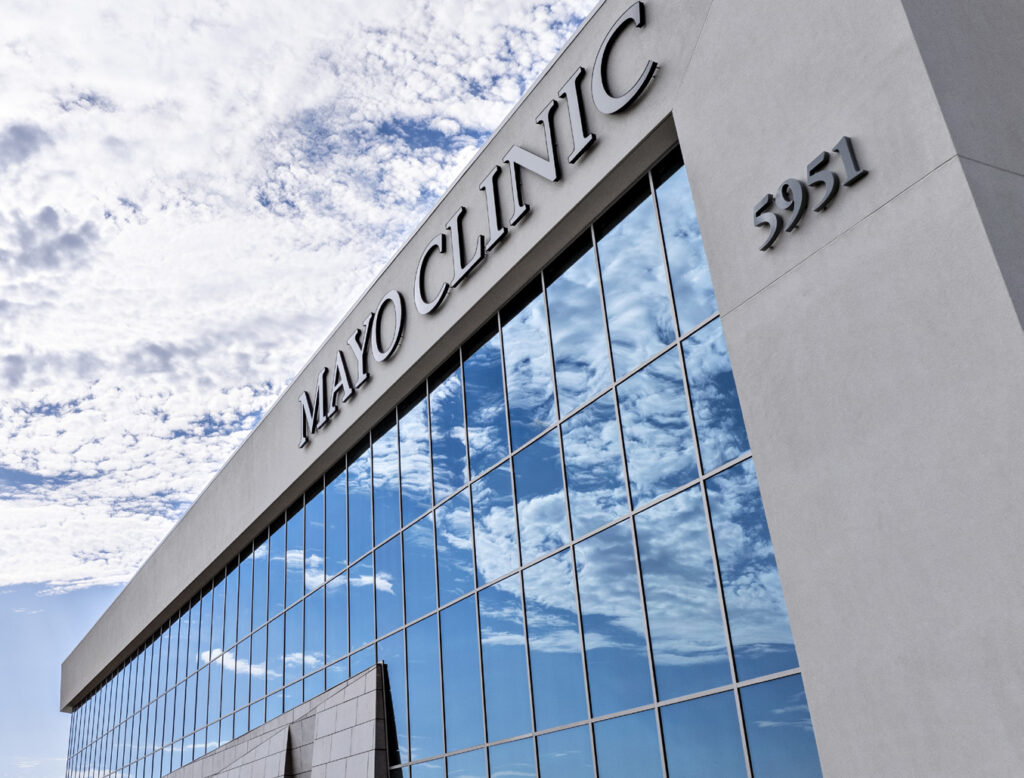
Bold. Forward. Unbound. in Arizona is designed to meet the growing complex care needs of patients in the Southwest. This ambitious project more than doubles the size of the Phoenix campus, transforming care delivery and enhancing research and education capabilities.
The first phase of the plan is the new Integrated Education and Research Building (IERB), designed to tightly integrate medical education and research activities and bring them closer to the patient bedside. The facility opened in the fall of 2024, bringing scientists and learners together to advance discoveries and train future healthcare leaders with technologies like augmented and virtual reality and 3D-model rendering. The IERB also added new research space to the Phoenix campus in four areas of focus — disease simulation, immuno-ecology, genomics and cellectics.
Patient care progress through Bold. Forward. Unbound. in Arizona includes advanced remote care platforms and AI protocols to predict and treat complex illnesses. Additional clinical spaces — including an enhanced emergency department, patient tower, operating rooms and a fully automated laboratory — provide novel approaches to the care of patients with serious and/or complex conditions and much-needed capacity to serve more patients.
Bold. Forward. Unbound. in Arizona also fosters a more collaborative environment dedicated to medical innovation and workforce development with Discovery Oasis — a developing 120-acre biotech innovation hub — and the adjacent Arizona State University Health Futures Center.
“Through Bold. Forward. Unbound. in Arizona, we can continue to grow our nationally recognized clinical care, bring our Research and Education shields closer to the patient, and ensure digital solutions needed to scale our care and enhance the patient experience are in place,” says Richard Gray, M.D. (S ’00), CEO of Mayo Clinic in Arizona. “Next, we will invite innovative collaborators to co-locate and co-create with us through Discovery Oasis.”
“ Through Bold. Forward. Unbound. in Arizona, we can … ensure digital solutions needed to scale our care and enhance the patient experience are in place.”
– Richard Gray, M.D., CEO of Mayo Clinic in Arizona

BOLD. FORWARD. UNBOUND. IN FLORIDA: CREATING A SMART, HUMAN-CENTERED CAMPUS
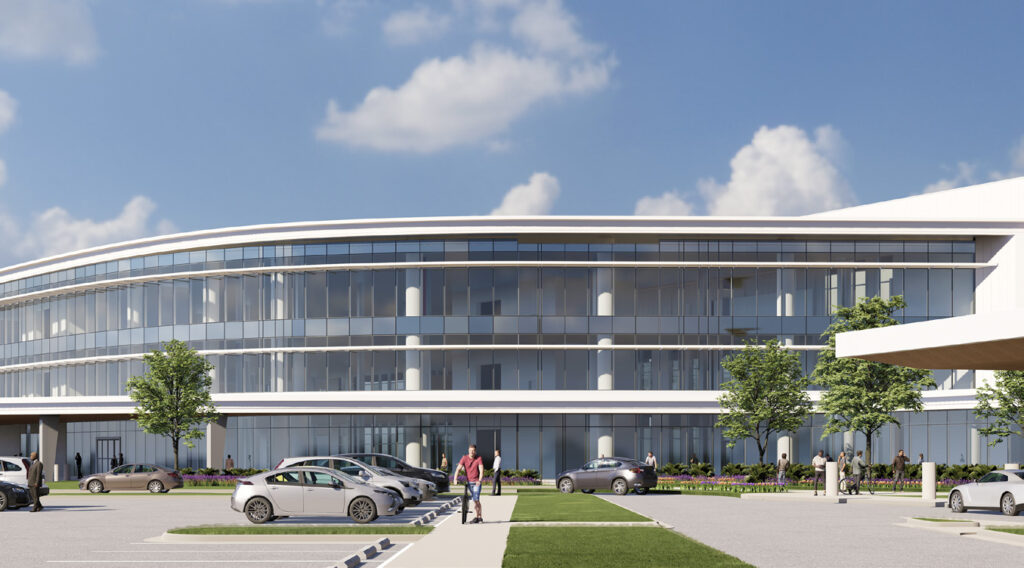
Bold. Forward. Unbound. in Florida is transforming the campus into a smart, human-centered environment that expands patient care capabilities, biomedical research and education — all seamlessly connected through integrated technology. By 2026, the campus will add 750,000 square feet, five hospital-tower floors and 112 inpatient rooms, significantly enhancing its capacity to serve patients.
Patient rooms have been meticulously designed to promote healing and adaptability, featuring intelligent patient care systems and wireless vitals monitoring. These technologies allow care teams to gather clinical information with minimal disruptions. Patient rooms will have 80% more sunlight than before and respond to voice commands for adjusting lighting and temperature. Behind the scenes, added automation will support clinical documentation, supply needs and fall-risk notifications.
A new Integrated Oncology Building will provide access to advanced cancer treatments, including proton beam therapy and North America’s first carbon ion therapy facility, enhancing the seamless and coordinated care experience for cancer patients.
“Our expansion and digital transformation reflect our commitment to exceptional care for patients and outstanding experiences for our staff,” says Kent Thielen, M.D. (RD ’94, RNEU ’97), CEO of Mayo Clinic in Florida.
An innovative feature allows staff to use robots to bring linens and supplies to patient rooms. This reduces the need for staff to retrieve medications and supplies, saving care teams valuable time that can be instead used to comfort and support patients.
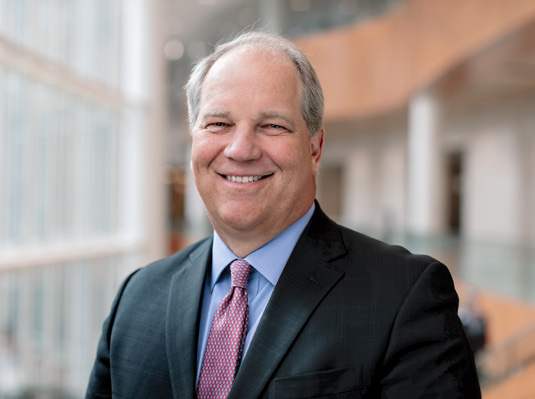
“ Our expansion and digital transformation reflect our commitment to exceptional care for patients and outstanding experiences for our staff.”
– Kent Thielen, M.D., CEO of Mayo Clinic in Florida
MAYO CLINIC HEALTH SYSTEM EXPANSIONS ADD CAPACITY, NEW CAPABILITIES
Mayo Clinic Health System’s Bold. Forward. strategy is to achieve Category-of-One status in community and rural healthcare nationally by 2030. “Building forward-looking healing spaces that provide a compassionate, seamless and integrated digital and physical Mayo Clinic experience close to home, improving patient outcomes and fostering healing in its truest sense, is a top priority in the strategy,” says Prathibha Varkey, M.B.B.S. (PREV ’02), president, Mayo Clinic Health System.
In 2024, Mayo Clinic Health System celebrated the opening of the expanded and modernized facility in Mankato, Minnesota, and the new six-level, 96-bed hospital in La Crosse, Wisconsin. Both expansions combine state-of-the-art, flexible care spaces with integrated telehealth, digital health and AI technol- ogies, and include design efficiencies to support innovative care models and collaboration among staff. With these new spaces, patients have enhanced connected care experiences tailored to their unique needs, including virtual access to subspecialty clinicians at hub hospitals, such as Mayo Clinic in Rochester, allowing them to get the answers they need without leaving their communities.
“Building forward-looking healing spaces that provide a compassionate, seamless and integrated digital and physical Mayo Clinic experience close to home … is a top priority.”
– Prathibha Varkey, M.B.B.S., president, Mayo Clinic Health System.

Digital advancements with human connection
As Mayo Clinic redesigns its physical spaces, it’s employing human-centered design, an approach that seeks to deeply understand users’ needs to create design-based solutions.
Bold. Forward. Unbound. in Rochester teams conducted hundreds of interviews with patients and staff to uncover the pain points, daily stressors and challenges that could be addressed through design. A prime example of a human-centered, design-based solution is the care neighborhoods planned for the Rochester campus, which will simplify patient experiences by locating needed care services around the patient.
As Mayo Clinic incorporates technological advances like artificial intelligence (AI), robotics, predictive analytics and automation into patient care, a steady focus remains on prioritizing trust and human connection.
“Mayo Clinic Platform enables digital solutions that provide administrative support and augment the work our care teams do, such as critical thinking, making decisions and showing empathy,” says Sonya Makhni, M.D. (HIM ’21), medical director for Mayo Clinic Platform.
“We have developed a robust strategy to ensure that AI solutions transparently address bias and are appropriately validated,” Dr. Makhni adds. “We also have developed a comprehensive series of technical and clinical guardrails and validation requirements, and we build our processes, policies and technology infrastructure to make certain that new solutions transparently communicate their appropriate use, safety and fairness.”
As Mayo Clinic creates new care delivery models, it’s expanding its capacity to serve the needs of patients everywhere — not just those on its campuses.
That’s the mission of Mayo Clinic Platform, which uses de- identified data and technology to enable personalized, predictive and proactive medicine for people around the world.
Mayo Clinic is leading the way with initiatives like Advanced Care at Home, Clinical Trials Beyond Walls and Cancer Care Beyond Walls, Dr. Makhni says. These programs use virtual healthcare, wearables, machine learning and AI to improve access to quality care and research, no matter where patients live.
“As an example, Cancer Care Beyond Walls allows some patients to receive intravenous chemotherapy from the comfort of their own homes and incorporates digital technology and remote patient monitoring capabilities to improve clinical outcomes,” says Dr. Makhni. “The program will give more people access to cancer care and clinical trials, reduce their financial burden, and improve their quality of life.
“Technology and innovation are enabling new models of care delivery,” she adds. “We have many new tools that enable us to advance our mission and extend high-quality care to more people around the world.”

“Technology and innovation are enabling new models of care delivery. We have many new tools that enable us to advance our mission and extend high-quality care to more people around the world.”
– Sonya Makhni, M.D., medical director for Mayo Clinic Platform.
REIMAGINING HEALTHCARE
Bold. Forward. is rooted in Mayo Clinic’s commitment to patients everywhere and is a strategy to cure, connect and transform healthcare globally. By seamlessly blending digital innovation with physical transformation and under- pinning it all with a human-centered design, Bold. Forward. Unbound. is creating a healthcare infrastructure that is more responsive, efficient and focused on the needs of patients and staff.
“This strategy is fundamentally reimagining how we deliver care,” says Dr. Farrugia. “By integrating our digital and physical capabilities, we’re creating a new paradigm for healthcare — one that will allow us to provide better care to more people, advance medical knowledge faster than ever before, and ultimately, improve and save countless lives.
“The impact of Bold. Forward. Unbound. will be felt not just by Mayo Clinic patients, but by people around the world,” he continues. “Our alumni, who are ambassadors for Mayo Clinic’s values and patient-centered model of care, are part of this future as these innovations ripple across the healthcare ecosystem. Mayo Clinic is not just adapting to the future of healthcare — we’re creating it.”
MAPPING THE TRANSFORMATION OF MEDICINE
Take a closer look at how Bold. Forward. Unbound. is changing Mayo Clinic campuses.
ROCHESTER, MINNESOTA

2.4 million square feet of new construction, including 1.8 million square feet across two new clinical buildings

Uninterrupted, horizontal connectivity from the Gonda Building through each of the two future clinical buildings

First deployment of Mayo Clinic’s neighborhoods philosophy
PHOENIX, ARIZONA
Doubled the size of the Phoenix campus to accommodate rapid growth in the Southwest region

99 new inpatient beds; 2 more floors of outpatient space; 35-bed observation unit added

40% increase in research space with the Integrated Education and Research Building

JACKSONVILLE, FLORIDA

750,000 additional square feet added to the campus by 2026, including a $432 million hospital expansion

112 new inpatient rooms; Designs will increase sunlight in new patient rooms by over 80%

New Integrated Oncology Building with North America’s first carbon ion therapy unit
MANKATO, MINNESOTA
A $155 million bed-tower expansion completed in 2024; 160,000 additional square feet

3 new floors modernize the patient care environment, adding flexible spaces combined with digitally integrated tools

41 ICU/PCU beds and 45 med/surg beds and 38 birth center beds, including OB triage, postpartum, labor and delivery, C-section and special care nursery

LA CROSSE, WISCONSIN

A new, 96-bed, 6-level hospital to replace the existing hospital building; 287,000 square feet including 50,000 square feet of shell space

8 labor, delivery, recovery and postpartum rooms with 4 special care nursery suites

A $200+ million project opened in 2024
This story appears in the latest issue of Mayo Clinic Alumni magazine. You can read or download a PDF of the issue here.
Mayo Clinic alumni are entitled to the print version of the quarterly magazine. If you’re not receiving the magazine, register or log in to your online MCAA profile to make sure your address is correctly entered. Or contact the Alumni Association at mayoalumni@mayo.edu or 507-284-2317 for help.
